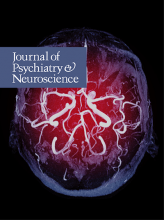A 44-year-old man experienced his first major depressive episode 2 years ago and responded well to 150 mg/d of sertraline. He was on no other medications. He relapsed (sadness, psycho-motor retardation, decreased energy, concentration, sleep and appetite) after continuing the same dose of sertraline for 1 year. He did not report any precipitating factors that could have contributed to the relapse, but when asked about the possibility of a switch of his generic medications just before the relapse, he remembered that the pharmacist dispensed a different generic sertraline as it was the only one available in the pharmacy at that moment. Because the patient had been symptom-free for a year with the previous generic sertraline before relapse, the pharmacist was then asked to dispense the previous generic version. The patient noticed substantial improvement and achieved remission from his depressive symptoms within 2 months. Since then, he has continued to take the same generic sertraline at 150 mg/d and has been in remission.
Generic versions of brand-name psychotropic medications, particularly generic antidepressants, can constitute more than 70% of all psychiatric prescriptions.1 Cost considerations have driven the increased use of generics, but long-term cost-benefit efficacy has not been unequivocally demonstrated.2–6 No rigorously designed large-scale studies comparing generic and brand-name psychotropics have been reported, and many case reports of altered therapeutic response (TR) and side effects (SE) associated with generic switches have been published.3,7 A minority of generic switches appear to be associated with adverse TR and SE, but it is difficult to identify this minority a priori.
Generics, in contrast to brand-name medications, are not required to undergo efficacy and safety studies before being marketed.8 Bioequivalence studies of generics involve single-dose studies in young, healthy volunteers, and are then generalized to patient populations that can vary by numerous parameters, such as age, sex, race and disorder.9–11 A recently published study in a clinical setting examined switching from brand-name to generic olanzapine in patients with schizophrenia and found lower serum olanzapine concentrations associated with the switch.12 Although no short-term symptomatic changes were noted, the study raised concerns about long-term symptom control and suggested that generic substitution be considered a potential indication for therapeutic drug monitoring.12,13
For pharmacokinetic bioequivalence, the generic and brand-name medication must have maximum plasma concentration (Cmax) and the area under the plasma concentration-time curve (AUC) falling within the range of 0.80 to 1.25 to be within the 90% confidence interval.14 Thus, variance among generics could be especially large if they are at opposite ends of these confidence intervals. While bioequivalence is demonstrated for the active ingredient, the actual pharmacokinetic parameters could differ owing to varying excipients in different generics. Among psychotropic medications, most published adverse TRs and SEs with switches from brand-name to generic medications have been with anticonvulsants and mood stabilizers owing to the narrower therapeutic index of these medications.3 Several case reports and systematic reviews on emergence of adverse TRs and SEs have been published on antidepressant, antipsychotic and anxiolytic brand-name to generic switches.3,6,15,16
The case vignette was an interesting instance of relapse involving a switch from one generic medication to another. There were no SEs associated with the generic switch, and the prior TR was reproduced when the patient reverted to the previous generic medication. The potential for drug variability may be greater when switching between generics than when switching from a brand-name to a generic medication.12 This variability is of salience with increasing availability and use of generics in an aging population. In a minority of patients, bioequivalence does not equate to pharmacodynamic and clinical equivalence, and this should be considered in the context of rapid emergence of altered TR and SE among stable patients. When confirmed, a “no substitution” order for brand or generic medications can be specified. Clinicians and patients are often unaware of generic switches by the pharmacy, and it is important to explore this possibility in the context of altered TRs or SEs in patients who were previously stable on their medications.3,17
Footnotes
Competing interests: H.C. Margolese reports grants from Amgen, BMS, Envivo, Lundbeck, Janssen and Roche; and personal fees from BMS, Janssen, Lundbeck, Novartis, Otsuka, Sunovian, Perdue and Shire outside the submitted work
The information in this column is not intended as a definitive treatment strategy but as a suggested approach for clinicians treating patients with similar histories. Individual cases may vary and should be evaluated carefully before treatment is provided. The patient described in this column is a composite with characteristics of several real patients.






